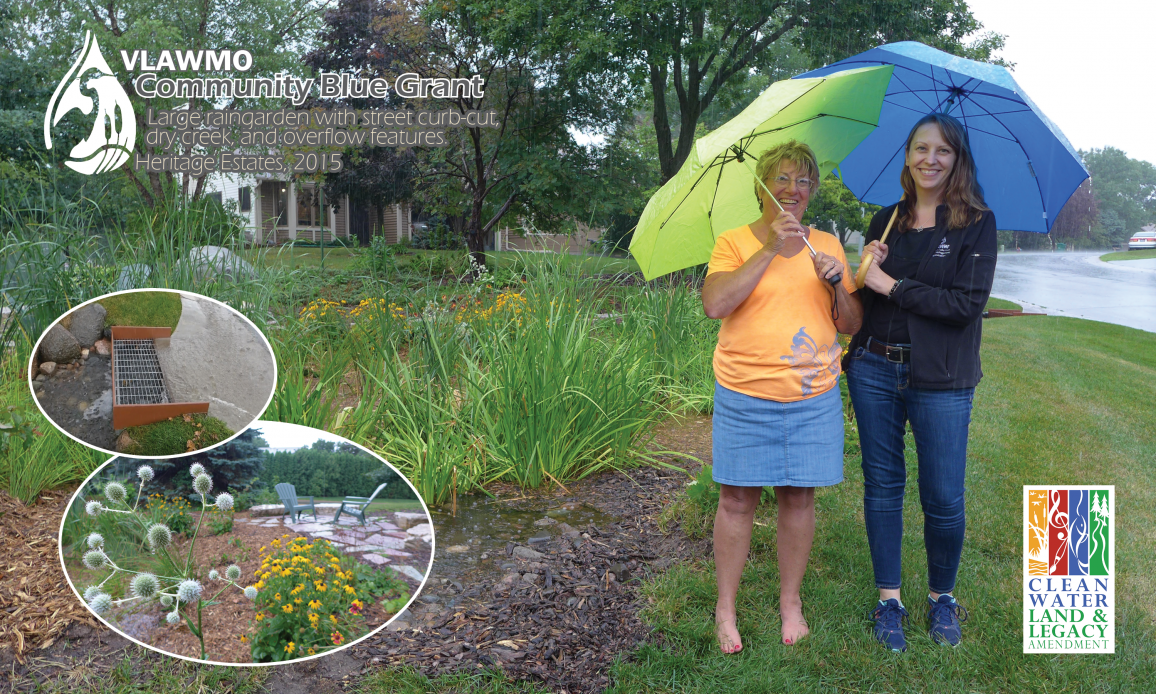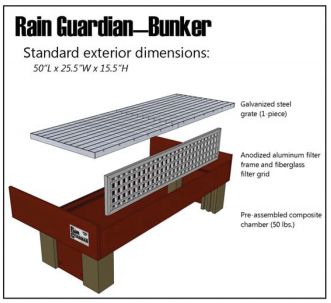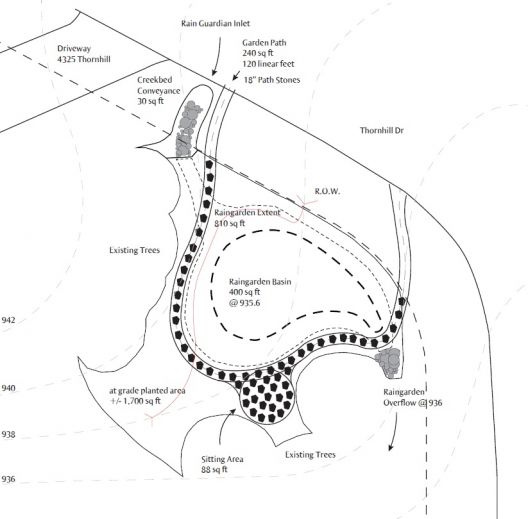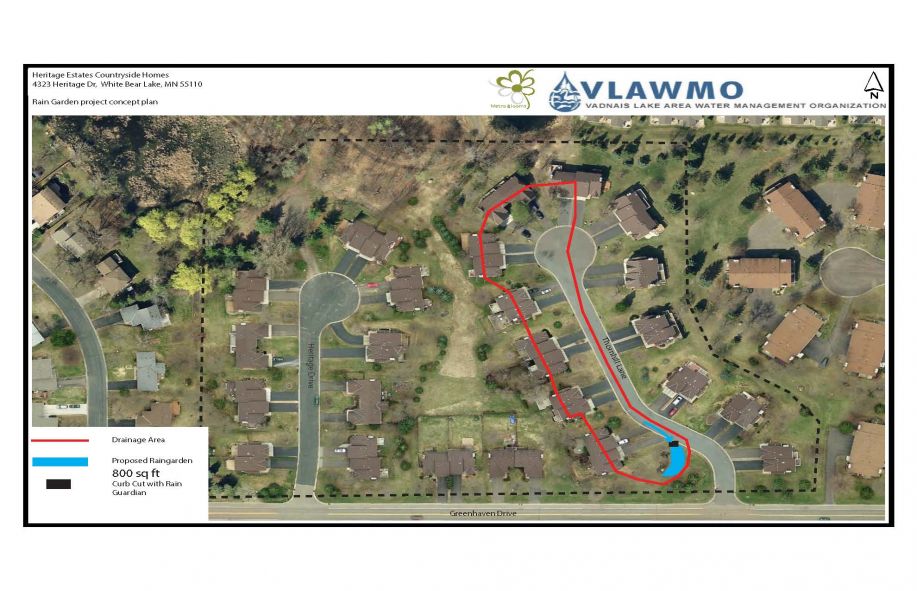Heritage Estates Curb-Cut Raingarden

Quick Facts:
1.04 acres of neighborhood rooftops, streets, driveways, and yards drain into the raingarden.
Portions of 12 properties drain into the raingarden.
Project includes a curb-cut and “raingaurdian” catch box device to divert street runoff.
Basin depth: 9”
Basin size: 935.6 sq ft
Year completed: 2015
Funding:
Project was funded through a $14,500 grant from the Board of Soil and Water Resources Clean Water Fund.
Reason for project:
This large raingarden captures and treats stormwater runoff going into Lambert Creek. As a former agriculture ditch, Lambert Creek experiences higher stormwater volumes and sedimentation rates than what it was designed for. Now surrounded by a surburban setting, Lambert Creek faces new runoff patterns and storage needs beyond the ditch system itself. Projects like this serve to reduce the strain on Lambert Creek by storing water closer to where it falls. When this happens and when runoff is allowed to temporarily pond and infiltrate slowly, excess nutrients and sediment are also contained on the landscape. This helps to reduce algae blooms, reduces stress on stormwater and drainage infrastructure, and reduces other harms to the aquatic ecosystem.
Lambert Creek drains into East Vadnais Lake, which is the drinking water reservoir for the Saint Paul Regional Water Services (SPRWS). Efforts to improve the watershed upstream from East Vadnais Lake help to protect this valuable public resource.
Construction:
Construction included:
- Excavating a raingarden basin
- Introducing a soil amendment for drainage and plant establishment
- Installing a walkway and seating area around the raingarden
- Installing a dry creek (rock bed) to convey water from the street into the raingarden
- Installing a raingardian bunker catch box to collect sediment and debris before it enters raingarden
- Installing an overflow feature to direct water back into the stormdrain network when basin is full


Native plants used in the raingarden design include prairie dropseed, little bluestem, beebalm, rattlesnake master, purple coneflower, anise hyssop, black-eyed Susan, pussy toes, and firewheel.
VLAWMO partnered with the Heritage Estates Neighborhood Association, local Boy Scouts, and Metro Blooms landscape architects to plan and build the project.
Results:
The raingarden supports the health and longevity of its receiving waterbodies, Lambert Creek and East Vadnais Lake.
Each year, the project is estimated to capture and treat:
- 466,313 gallons of stormwater runoff (~11,658 bathtubs)
- 56.54 lbs of sediment (total suspended solids)
- .12 lbs of total phosphorus (1 lb phosphorus creates 500 lbs of algae)










